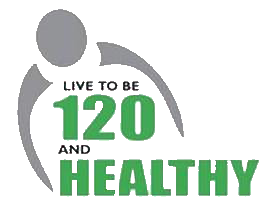When February rolls around, and Valentine’s Day nears, we give extra attention to the amazing pump inside that circulates blood 100,000 times a day and sustains our hopes and dreams quietly and almost effortlessly. The Go Red for Women campaign, now coupled with a Go Red for Men campaign (which I chair locally to support education and testing for our women) raises awareness to beat America’s number one killer.
In fact, heart disease still kills more women than all cancers combined. Women aren’t just “men with smaller hearts,” so it’s important differences in heart health and disease are important to share.
1. Women develop advanced heart disease about 10 years later than men.
Most premenopausal women are relatively protected from heart attacks, and advanced disease before age 50 or so is uncommon unless there is smoking, diabetes, or a genetically high cholesterol. Unfortunately, the rapid rise in obesity and the conditions that accompany it — like increased blood pressure, blood sugar and cholesterol — are leading to earlier presentations of serious heart disease.
2. Atherosclerosis is different in women.
Women tend to have more diffuse plaque, whereas men have more focal “sausage link” lesions. This may make the disease more difficult to diagnose by stress testing, and even by coronary angiography.
3. Certain heart diseases cluster in women.
Spontaneous injury to heart and carotid arteries, called dissections, are rare, but are much more common in women, particularly before menopause. Hormonal differences are suspected as an explanation for this. Furthermore, a dramatic stress-heart syndrome that mimics a heart attack (Taku-Tsubo Syndrome) is much more common in women.
4. Chest pain is complex in women.
One the one hand, fewer women seen with chest pain have the focal and severe narrowings cardiologists associate with heart disease. On the other hand, women seen in the hospital with chest pain have a higher mortality than men, in part because they are, on average, 10 years older and have other disease conditions. Atherosclerosis of small arteries, dysfunction of the lining of the arteries (endothelium), and spasm of the arteries like a Charlie horse are all possible causes of chest pain without focal blockage.
5. Symptoms in women with heart disease may differ by race.
The Women’s Ischemia Syndrome Evaluation (WISE) is funded by the NIH and has provided many insights on women and the presentation of heart disease. In an analysis of women with suspected heart disease, black women more commonly described stomach symptoms compared with white women, while white women more frequently reported chest pain; rates and severity of blocked arteries did not differ by race, but mortality was nearly double in blacks. Atypical presentations may be a barrier to timely diagnosis and treatment.
6. Women are more likely to get a psych diagnosis.
When physicians were presented with heart symptoms in men and women, women were twice as likely to receive a mental health diagnosis as men. Any suspicious symptoms in women over age 30 must be investigated for coronary artery disease.
7. Women’s hearts are evaluated more slowly than men.
When over 5,000 emergency medical service runs for patients with suspected heart disease were analyzed, women were more likely to have a delayed evaluation. The authors pointed out that women are more likely to delay calling 911, have more complex medical problems when seen (as they tend to be older), and have worse outcomes.
8. Women fail to follow up with visits.
Women with heart disease generally need at least an annual office exam, but often fail to do that. In a study of this issue, the main reasons for failing to follow up were skepticism over the diagnosis, dealing with more pressing health issues, and being the one responsible for making the appointment. More active involvement of family and medical offices was urged.
9. Angina is serious in diabetic women.
When women with heart disease were followed for 13 years, women with diabetes and angina chest pain had a 3- to 4-fold increased risk of dying compared with women who had diabetes but no angina (chest pressure on exertion). Chest pain must be investigated in women, particularly if diabetic.
10. Women’s symptoms may differ.
In addition to classic angina, women may suffer dizziness, nausea, sweats, flutters, paleness, anxiety, fatigue, stomach pain, or shortness breath as symptoms of heart disease.
Heart disease is preventable through a lifestyle that’s free of smoking and rich in plant-based foods, movement, stress management, sleep, love and support, and even some regular wine. Adopting all of these habits can lower the risk of heart attack by almost 90% and stroke by 60%.
Early identification of heart disease with coronary artery calcium scoring in proper candidates may allow implantation of therapies to halt and reverse heart disease. It’s within our grasp to transform Go Red for Women into a celebration of dramatically lower heart disease rates and deaths. If not now, when?
Photo Credit: Getty Images
\ABS\Auto Blog Samurai\data\120 Blog\Healthcom\BlueberriesInABowl1-70x70.jpg) Why Blueberries Are So Great For Your Heart Yesterday, we reported that avocados are good for your heart health because they help lower our cholesterol. In the same vein of some of our favorite tasty foods doubling as health aids, we have more Read
Why Blueberries Are So Great For Your Heart Yesterday, we reported that avocados are good for your heart health because they help lower our cholesterol. In the same vein of some of our favorite tasty foods doubling as health aids, we have more Read 
Dr. Kahn is a Clinical Professor of Medicine at Wayne State University School of Medicine and Director of Cardiac Wellness, Michigan Healthcare Professionals PC. He is a graduate Summa Cum Laude of the University of Michigan School of Medicine. He lectures widely on the cardiac benefits of vegan nutrition and mind body practices. He also writes for Readers Digest Magazine as the Holistic Heart Doc and his first book, The Whole Heart Solution, is available for sale now.




